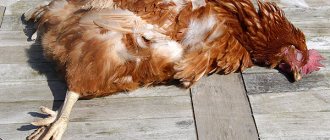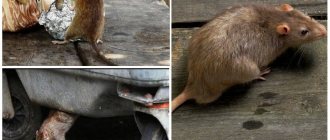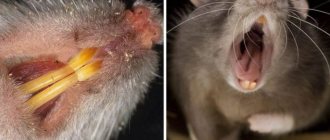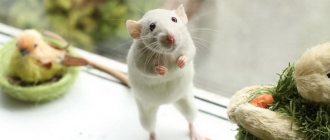According to the latest data from zoologists, rats are second in number only to insects. And some scientists believe that there are even more rodents. Their numbers are growing steadily, regardless of the wealth of the country they have chosen to live in. In Moscow, according to the most approximate estimates, there are forty rats for every city dweller, including migrant workers. The vitality of the latter is explained by their omnivorous nature (we will discuss what rats eat a little later) and the speed of reproduction. But an equally important factor is their adaptability, intelligence and intelligence. Thanks to these qualities, rats quite confidently fit into the category of pets, sometimes showing enviable devotion to the owner and the ability to take into account his wishes. And now about everything in more detail and in order.
Features of rat nutrition
Coming up with a list of what rats eat is almost impossible because they eat everything. The only exceptions are absolutely inedible things, although even wires and polyethylene can be chewed and partially swallowed. However, for all their indiscriminateness, rats treat food in the wild quite reasonably. In the wild, they never overeat, so they do not become obese. If a rat is lucky enough to get a high-calorie piece, it eats less food. If what rats eat is low in nutrition, the amount consumed increases accordingly. If there is a lack of some minerals or vitamins in their body, these rodents look for foods with a high content of the necessary substance.
It should be noted that rats (domestic or wild - it makes no difference) eat all the time. If you forget to feed your pet for at least two days, it will die. Therefore, in the wild, animals are constantly in search of food, and, if possible, they create reserves.
Where can a rat live?
In our country, the most common rat is the gray barn, also known as the basement rat. In places where they live together, the gray individual in all cases completely survives its black fellow tribesman, as it is distinguished by cunning, dexterity and strength. Therefore, she feels great in cities and villages. For permanent residence, these animals choose basements, warehouses, fields located near granaries, and garden plots. In addition, they can often be found at railway stations and piers, in places located near garbage dumps or food waste dumps. Rats are equally good at consuming both plants and meat products. They eat the corpses of animals and people who, for some reason, are left unattended. In this regard, it used to be mandatory to sit near the deceased, since the fresh corpse smell attracts gray rodents. They are not averse to attacking living creatures: chickens, geese, puppies, ducklings, etc.
Taste preferences of wild rats
Despite all the promiscuity of the creatures we are considering, there are some foods that rats like more than others. Thus, if there is a choice between wheat and wholemeal flour, preference will be given to the latter. Although if the grain is thoroughly wet or mixed with odorless vegetable oil, attention will be divided equally between both “dishes”.
Sweets are what rats (both tame and free) eat with special pleasure. Moreover, it doesn’t matter how nutritious the food is, sweetened with saccharin will do. So in this case, it is not the calorie content (and, accordingly, the survival factor), but the taste sensation that is important.
The following fact is noteworthy: what a white rat eats can be categorically rejected by its wild relatives. For example, it is well established that laboratory albinos prefer food with the addition of anise and butyric acid, while ordinary rats diligently avoid it. Moreover, if experimental cubs are fed only food with such additives, and then offered a treat without them, they will not hesitate to change the imposed diet. Scientists believe that the attachment of white rats to these “flavors” is genetic, innate.
Are rats hunters?
No matter how paradoxical it may sound, tailed animals love to hunt; of course, not all small animals are up to them, but they are not averse to feasting on lizards, toads and small species of birds at any time.
But it is worth clarifying that such nutrition is not available to them all year round, but prevails mainly in the summer.
With the onset of cold weather, the tailed animals try to move as close to humans as possible, this is necessary in order to escape hunger. Due to the fact that rats cannot go long without food in difficult moments of life, they can attack pets or even humans.
Before starting to absorb a new unknown product, old individuals try it. This is to ensure that the food is safe. And only if they remain alive, the young individuals begin to eat.
What to feed your pet
The diet of a tame animal must be calculated and diversified, because ornamental rats eat everything, like their wild relatives, but they move less, and therefore they can become obese. And if they lack some element, they will not be able to find it on their own. Pet stores sell balanced foods, when developing which manufacturers took into account what domestic rats eat and what they need most. However, you should not limit yourself to only such products if you want to have a healthy animal in the house, and not regularly take it to the veterinary clinic. It is necessary to give your pet boiled meat, seafood and tripe. By the way, even kitten food is suitable. The diet must include vegetables (carrots, cucumbers, turnips, cabbage), berries and fruits. Instead of multivitamins, you just need to regularly feed your pet rat with greens - lettuce, dandelion and clover leaves, dill. Remember what rats eat in the wild. Cereals, that's right! The grain can be given in its usual form, or it can be sprouted. Oat and wheat sprouts are especially useful in this regard - in winter they are a valuable source of vitamin E.
Rat nutritional features
Rats are omnivores, but each species has its own preferences. Some people eat more plant foods, seeds, vegetables, and fruits. Others prefer insects, mollusks, and small invertebrates. For example, the diet of a gray rat always contains animal protein, fish and amphibians, mollusks, small rodents and insectivores. From plant foods, rats feed on seeds, grains, and succulent parts of plants. Near a person they find all available food products, waste, livestock and poultry feed. There are practically no stocks.
Medicinal products
No matter how hard you try to protect your pets, it is very possible that they will still get sick. In this case, you need to be more careful about what rats eat: some foods will help them overcome illness. So, if your animal is already “aged”, so that it does not suffer from arthritis, add a little garlic and ginger to its food. As a preventive measure for all kinds of viral infections, you can give onions, prunes, cranberries, and strawberries. If your pet needs antibiotics, before injecting him with medicine, it is better to feed the patient bananas, eggplants, raspberries, plums, and the same garlic and onions. You can feed the animal with echinacea decoction.
Vegetables, fruits and other foods that are given little by little
When discussing what rats eat (we are talking exclusively about pets), we should discuss not only the quality of the food, but also its quantity. So, you need to know what food can harm your pets if they receive it regularly and in large doses. Among such products are:
- Pears. They are fixed, so give no more than once every two weeks.
- Grape. It can “pull” fermentation along with it.
- Beet. Diarrhea is almost guaranteed, but if you didn’t experience it the first time, you can give it, because it’s useful. Just don't overdo it!
- Eggs. Be sure to cook it, it is better to buy quail and offer it no more than once a week.
- Sour cream. Only as a treat, little by little and with the same frequency.
What to put in the trap?
There are several options for attracting pests into a trap.
Salo
This is the best bait for rats, and even mice. Try using fresh, slightly smoked or fried, and if it also has layers of meat, the rodent will definitely not resist.
Vegetable oil
It is better if it is unrefined. You can spread it on bread, rolls or any other food, and even cotton wool. It is also often recommended to use peanut butter, the aroma of which is quite persistent.
Corn
A universal bait for a rat trap, as it is a natural food for pests. A greater effect can be achieved if you mix the grain with oil or lard. Fresh baked goods will also work.
Sausages
They must be natural and, therefore, have a short shelf life. Their smell will definitely attract mammals. There should be no mistake here, and if there is, then it’s worth thinking about the quality of the sausage product.
Meat
Must be fresh or boiled. The piece should not be large, otherwise the rat may simply bite off the edges and the trap will not work.
Sunflower seeds and peanuts
Roasted seeds and nuts are successfully used to catch “unwanted guests.” Just 3-4 grains are enough.
Poisonous grass
So, we figured out what rats eat. But you also need to have an idea of what is dangerous for them. Especially if your pet has the opportunity to move freely around the apartment, and you are a fan of home gardening. If he can only get potato, cherry, tobacco, and euphorbia leaves from your hands (that is, you just need to check that the animal does not eat them), then he can gnaw indoor flowers without your knowledge. The following house plants are poisonous to rats:
- dieffenbachia;
- indoor feces;
- azalea;
- begonia;
- ivy (any variety);
- amaryllis;
- cyclamen.
The worst thing is that the rat cannot be forbidden to eat flowers, or hide them so that he cannot get to them. If you have such plants in your house, you will have to keep the animal in a cage.
Types of rats
The numerous genus of rats is poorly studied. The most famous types of rodents are:
- The gray rat or pasyuk is one of the large species of pests found in Russia. The body dimensions of an adult individual reach 25 cm, and the maximum weight is 390 g. The tail is slightly shorter than the body. The muzzle is quite wide and blunt, the auricle is small. The hairline is colored gray with a slight reddish tint. Rats prefer to settle near overgrown reservoirs, where they dig holes up to 5 m long. They can live in parks, basements, sewers, landfills, and vacant lots. They are aggressive.
- The black rat is smaller than the gray one. It is characterized by a pointed muzzle, large rounded ears and a long tail. It is densely covered with hair and can reach almost 29 cm in an adult. The largest rats of this species weigh up to 300 g with a body length of 22 cm. The animal is afraid of water, swims poorly, lives in foothills, forests, attics and roofs of buildings. The rodent prefers plant foods and can feast on invertebrates.
- Turkestan rat. The animal is similar to its gray relative, but has a wider head and a dense body. The back of the rodent is colored reddish-brown, and the abdomen is whitish-yellow. The rat's ears are covered with short, thick fur. The length of the body is no more than 23 cm, and the tail is 21.5 cm. It prefers to live in barns, mills, and warehouses.
These species of wild rats live in Russia. The Bosavi woolly rat is officially recognized as the largest rat. The length of its body from the base of the tail to the tip of the nose is 0.82 m, and the weight of the animal is about 1.5 kg. The inhabitants of the tropical forests of an extinct volcano in Papua New Guinea are not aggressive towards humans and do not attack them.
In large cities, the number of rats is comparable to the population. The largest concentration of rats was recorded in Rome, where about 15 million rodents live.
To exterminate dangerous animals, people use a whole arsenal of means, ranging from safe folk recipes to highly toxic pesticides. However, this targeted destruction is not effective, since wild rats are hardy, fertile and cautious.
Similar articles
Commander's belt tooth
The genus of rodents in the rat family of mice includes at least 64 species. These rodents are very widespread due to their unpretentiousness.
Prohibited
Some foods are generally contraindicated for these animals, although not as dangerous as herbs. Of the things that rats absolutely cannot eat, blue cheese should be mentioned first. And in general, any cheese is fatty and salty, and therefore leads to obesity in pets. But “blue” can even poison your pet.
Green bananas impair the digestibility of starch. These fruits should only be given to rats when they are ripe.
The green parts of potatoes contain solanine, a fairly strong poison for rats. When cooked it is less dangerous, but when raw it can be fatal.
Raw beans and peas are almost guaranteed to cause flatulence in the animal and, as a result, tympany.
Smoked meats, lard (especially salted), fried meat, sausage - your pet will definitely do without all this. The consequences of regularly feeding such products can be very sad.
Chocolate, candy, cakes and pastries should also be excluded from the rat’s diet. If you want to treat her to something tasty, give her a piece of fruit.
Brown rat
The brown rat is yet another species of rat that poses a danger to humans. Many people believe that this species comes from Norway, but in fact this is not the case. The rodent came from Asia, China and Japan. Someone arrived in Europe in the eighteenth century, gradually displacing his “black cousin.” This species has had normal contact with people - on the one hand, because alcohol harms grains and other crops, on the other hand, because these animals are carriers of dangerous diseases.
The lifestyle of a brown rodent is very similar to the lifestyle of a black rat in that both species prefer to live in colonies near a place where there is water, but unlike their black counterpart, brown rodents are very poor climbers, which is why they do not nest on attics. These animals prefer to settle in underground rooms or on lower floors, as well as in pipeline networks.
In many ways, brown rats are similar to black rodents, so they only have different properties.
Characteristic
- The animal is quite large and belongs to the murid family.
- The basta rodent has a long body - about 25 cm, and a tail of about the same size.
- An adult weighs about 350 g. Therefore, this character is larger and heavier than its relative the black rat.
Habitat, lifestyle and nutrition
This species is omnivorous. Rodents have adapted very well to life compared to humans and eat the food they find in the house. The rodent is nocturnal. Its presence can only be detected on the nose quite early in the morning or at dusk. The beloved looks for food in sewers or landfills. It digs holes and lives close to where people live. His diet mainly consists of fruits, cereals and meat. Rats live in colonies in which house rules of behavior are established.
A rodent can urinate on its relatives. This is a demonstration of dominance and a way to indicate your place in the social hierarchy. There are cases when dominant individuals urinate on each other - this shows that they have equal rights, and with such a gesture they accept each other.
The brown rat has quite aggressive behavior. This animal can attack anyone who disturbs it. The rodent is a formidable opponent in battle: a powerful runner, it can cover 100 meters in less than 10 seconds, can jump up to 2 meters in length and swim for almost 72 hours.
Males live about 4 years, females almost to the same extent. Ant. more - from 2 to 3 years. The weight of the male is from 450 to 500 g, the female weighs on average from 250 to 350 g. The average length of the animal is from 30 to 50 cm. Rodents have poor eyes, which are compensated by a very developed sense of smell. Animals can reproduce very dynamically. During the year there are from 4 to 7 litters, each with from 7 to 14 cubs.









